Classic Works of Eusebius of Caesarea (14 vols.)
Digital Logos Edition

Overview
Study the thought and theology of the early church with writings from the Father of Church History. Eusebius of Caesarea was a Roman historian, exegete, and Christian polemicist. A scholar of the biblical canon, he was appointed bishop of Caesarea in AD 314, and he spent his life writing about the gospel and church history.
This collection includes 14 of Eusebius’ most significant works—histories, apologetics arguments, philosophical treatises, and more. Learn from his detailed account of the Emperor Constantine’s life, his Gospel harmony, and his reasoned defenses of the Christian faith.
With Logos Bible Software, Scripture passages appear on mouse-over, and all cross-references link to the other resources in your digital library, making this collection powerful and easy to access—a rich supplement to any study of the early church. Perform comprehensive searches by topic or Scripture reference—finding, for instance, every mention of “Caesarea” or “apostolic.”

Key Features
- Surveys the most significant works of Eusebius
- Explores what defense of the Christian faith looked like in the early church
- Examines everything from apologetics through histories and philosophical treatises
- Provides an excellent introduction to this influential scholar of the biblical canon
Product Details
- Title: Classic Works of Eusebius of Caesarea
- Author: Eusebius of Caesarea
- Volumes: 14
- Pages: 1,421
- Resource Type: Collected Works
- Topic: Church Fathers
Individual Titles
- The Ecclesiastical History, vol. 1
- The Ecclesiastical History, vol. 1: Greek Text
- The Ecclesiastical History, vol. 2
- The Ecclesiastical History, vol. 2: Greek Text
- An Ecclesiastical History to the 20th Year of the Reign of Constantine
- Eusebius Bishop of Caesarea on the Theophania, or, Divine Manifestation of Our Lord and Savior Jesus Christ
- Eusebian Canons
- The Life of the Blessed Emperor Constantine
- Nicene and Post-Nicene Fathers, Second Series, vol. 1: Eusebius: Church History, Life of Constantine the Great, and Oration in Praise of Constantine (eds. Schaff, Wace) by Eusebius of Caesarea and Philip Schaff
- The Proof of the Gospel, vol. 1
- The Proof of the Gospel, vol. 2
- The Preparation for the Gospel, vol. 1
- The Preparation for the Gospel, vol. 2
- The Treatise of Eusebius against Hierocles
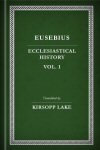
This resource contains the English translation of the first volume in The Ecclesiastical History. Volume 1 contains Books I–V and covers the history of the church from the days of the apostles until the beginning of the second century AD. Book I discusses Christology and Christ as the eternal Logos. Book II covers the lives and ministry of the apostles and the rise of the church up to the destruction of Jerusalem. In Book III, Eusebius examines the successors to the apostles, the writings of Josephus, notable bishops, heresies, and the reception of the canon. Book IV picks up in the reign of Trajan, addresses Gnosticism, and looks at the life and death of Polycarp and other martyrs. Book V concludes with further details on the martyrs as well as discussions of the bishops of Rome and Jerusalem, miracles, Marcion, Montanus, and the writings of Irenæus.
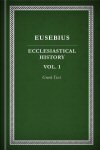
This resource contains the Greek text of the first volume in The Ecclesiastical History. Volume 1 contains Books I–V and covers the history of the church from the days of the apostles until the beginning of the second century AD. Book I discusses Christology and Christ as the eternal Logos. Book II covers the lives and ministry of the apostles and the rise of the church up to the destruction of Jerusalem. In Book III, Eusebius examines the successors to the apostles, the writings of Josephus, notable bishops, heresies, and the reception of the canon. Book IV picks up in the reign of Trajan, addresses Gnosticism, and looks at the life and death of Polycarp and other martyrs. Book V concludes with further details on the martyrs as well as discussions of the bishops of Rome and Jerusalem, miracles, Marcion, Montanus, and the writings of Irenæus.
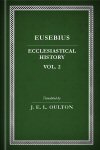
This resource contains the English translation of the second volume in The Ecclesiastical History. Volume 2 contains Books VI–X and an index to The Ecclesiastical History. Book VI examines the life and teachings of Origen in depth, plus those of Clement and Africanus, and includes further history of the martyrs. Book VII begins with the death of Origen, subsequent heresies, the persecution under Emperor Valerian, church life in Alexandria, the Manicheans, and noted churches of the day. The opening of Book VIII covers the persecution and destruction of churches and later gives a geographical listing of martyrs and the nature of the enemies of the church. Book IX includes disasters and wars of the era, the triumph of believers over persecution, and the downfall of those who oppressed the churches. Book X tells readers of the peace of God, the restoration of the churches, and the imperial decrees of Emperor Constantine that made restoration possible.
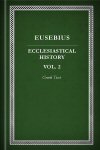
This resource contains the Greek text of the second volume in The Ecclesiastical History. Volume 2 contains Books VI–X and an index to The Ecclesiastical History. Book VI examines the life and teachings of Origen in depth, plus those of Clement and Africanus, and includes further history of the martyrs. Book VII begins with the death of Origen, subsequent heresies, the persecution under Emperor Valerian, church life in Alexandria, the Manicheans, and noted churches of the day. The opening of Book VIII covers the persecution and destruction of churches and later gives a geographical listing of martyrs and the nature of the enemies of the church. Book IX includes disasters and wars of the era, the triumph of believers over persecution, and the downfall of those who oppressed the churches. Book X tells readers of the peace of God, the restoration of the churches, and the imperial decrees of Emperor Constantine that made restoration possible.
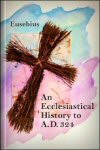
Divided into 10 parts, this is a detailed history of the church from the incarnation of Christ to the year 324. Written by the Roman historian Eusebius of Caesarea, this work presents historical details of both the church and the surrounding culture which would otherwise have been lost. A rich chronicle of writers, bishops, heretics, martyrs, persecutions, and more, this collection of anecdotes is an invaluable historical trove.
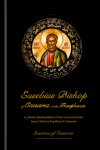
Thought to have been written shortly after 324, Theophanīa, or, Divine Manifestation of Our Lord and Savior Jesus Christ is a treatise on the divinity of the living Word. Translated from the Syriac text by Samuel Lee, this edition includes an overview of and introduction to the text, Lee’s translation methods, and an assessment of the manuscript’s authorship.
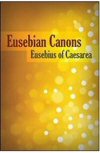
Eusebian Canons
- Author: Eusebius
- Publisher: Logos Research Systems, Inc.
- Publication Date: 2009
The Eusebian Canons is one of the first Gospel harmonies and the most widely used. It divides the Gospels into sections to show where they agree with one another. This harmony was in wide use from the fifth century onward, and still serves an important purpose for understanding how the Gospels tell an important story, and how that story has been understood and interpreted throughout the church’s history.

This Greek panegyric was written in honor of Constantine the Great—the first Roman emperor to espouse Christianity—giving an account of his life, rule, and works. The Life of the Blessed Emperor Constantine was composed in the fourth century by a contemporary, Eusebius of Caesarea, who became known as he “Father of Church History.” His detailed, though generous, account provides one of the most comprehensive sources for learning about Constantine’s religious policies as emperor. The work also engages in apologetics and provides a bibliographic account of Constantine’s life. This work is also famous for its controversial account of Constantine’s vision of a floating cross with the inscription “Conquer by this.”
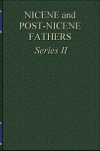
Nicene and Post-Nicene Fathers, Second Series, vol. 1: Eusebius: Church History, Life of Constantine the Great, and Oration in Praise of Constantine (eds. Schaff, Wace)
- Editors: Philip Schaff, Henry Wace
- Series: Nicene and Post-Nicene Fathers, Second Series
- Publisher: Christian Literature Company
- Publication Date: 1890
Contents:
- Eusebius of Caesarea
- The Church History of Eusebius
- The Martyrs of Palestine
- The Life of the Blessed Emperor Constantine
- The Oration of the Emperor Constantine
- The Oration in Praise of the Emperor Constantine
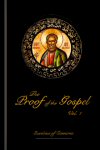
A translation of Eusebius of Caesarea’s Demonstratio Evangelica or “Proof of the Gospel”—an apologetic and dogmatic work of which only a fragment remains. Eusebius examines the person of Jesus Christ, and attempts to “convey the exact knowledge . . . of God’s mysterious dispensation in regard to our Lord and Saviour Jesus Christ.” Contains an introduction and overview from translator William John Ferrar .
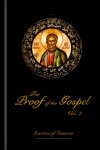
A translation of Eusebius of Caesarea’s Demonstratio Evangelica or “Proof of the Gospel”—an apologetic and dogmatic work of which only a fragment remains. Eusebius examines the person of Jesus Christ, and attempts to “convey the exact knowledge . . . of God’s mysterious dispensation in regard to our Lord and Saviour Jesus Christ.” Contains an introduction and overview from translator William John Ferrar .
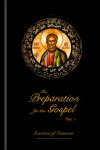
Praeparatio Evangelica , or “Preparation for the Gospel,” is Eusebius of Caesarea’s treatise on and defense of Christianity. Eusebius considered it an introduction to Christianity for pagans, but it holds greater value as a record of information and writings from historians and philosophers that cannot be found elsewhere, including Platonist philosopher Atticus’ preserved writings. Separated into two volumes, it includes an introduction and overview by translator E.H. Gifford.
Eusebius of Caesarea (c. AD 263–339) was a Roman historian, exegete, and Christian polemicist. He was appointed bishop of Caesarea in AD 314.
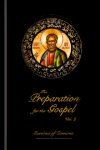
Praeparatio Evangelica, or “Preparation for the Gospel,” is Eusebius of Caesarea’s treatise on and defense of Christianity. Eusebius considered it an introduction to Christianity for pagans, but it holds greater value as a record of information and writings from historians and philosophers that cannot be found elsewhere, including Platonist philosopher Atticus’ preserved writings. Separated into two volumes, it includes an introduction and overview by translator E.H. Gifford.
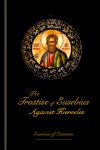
The Treatise of Eusebius, the Son of Pamphilus, Against the Life of Apollonius of Tyana Written by Philostratus, Occasioned by the Parallel Drawn by Hierocles between Him and Christ.
- Author: Eusebius of Caesarea
- Translator: F.C. Conybeare
- Publisher: G.P. Putnam’s Sons
- Publication Date: 1921
- Pages: 157
In The Treatise of Eusebius, Eusebius takes on the Roman governor’s glorification of Apollonius of Tyana. A parallel text with the original Greek is provided.
About Eusebius of Caesarea
Eusebius of Caesarea (c. AD 263–339) also called Eusebius Pamphili, was a Roman historian, exegete and Christian polemicist. He became the Bishop of Caesarea in Palestine about the year 314. Together with Pamphilus, he was a scholar of the Biblical canon. He wrote Demonstrations of the Gospel, Preparations for the Gospel, and On Discrepancies between the Gospels, Studies of the Biblical Text.